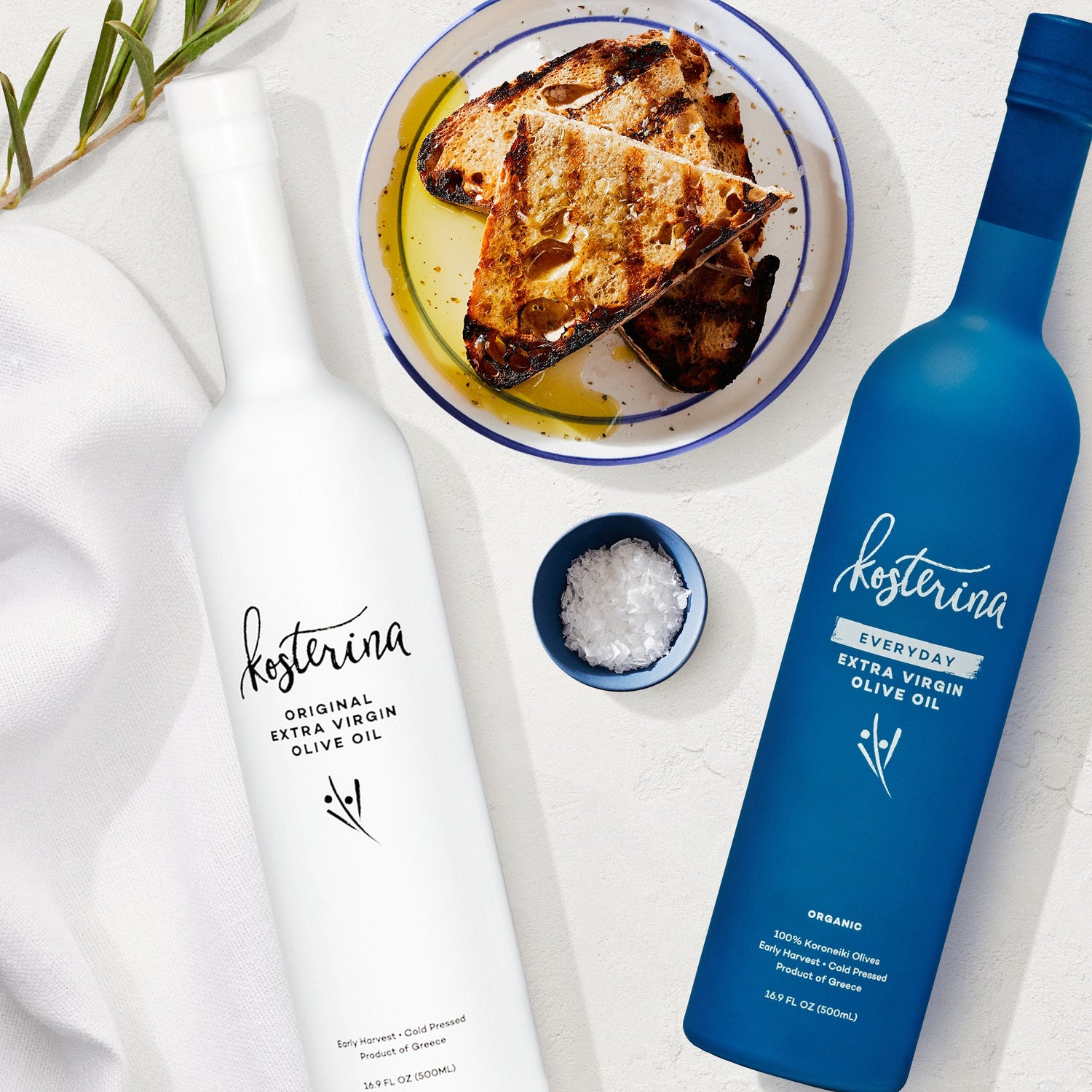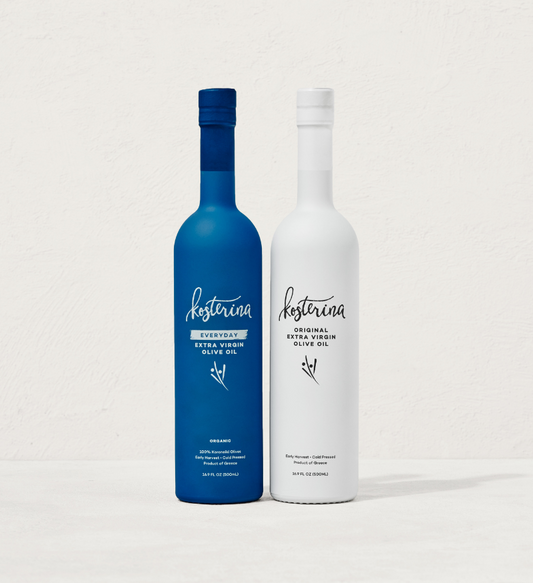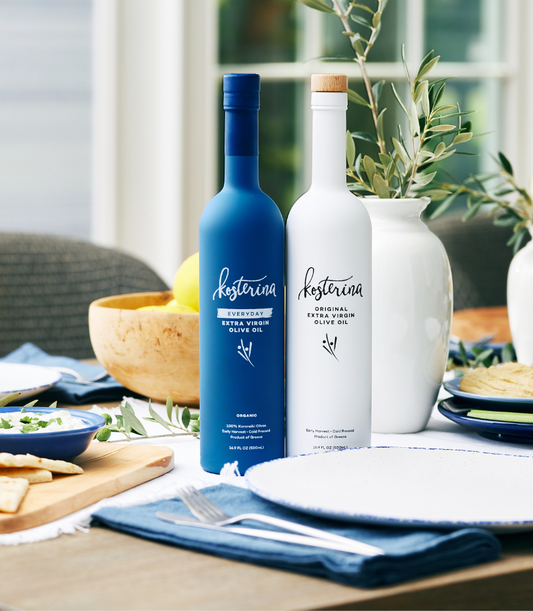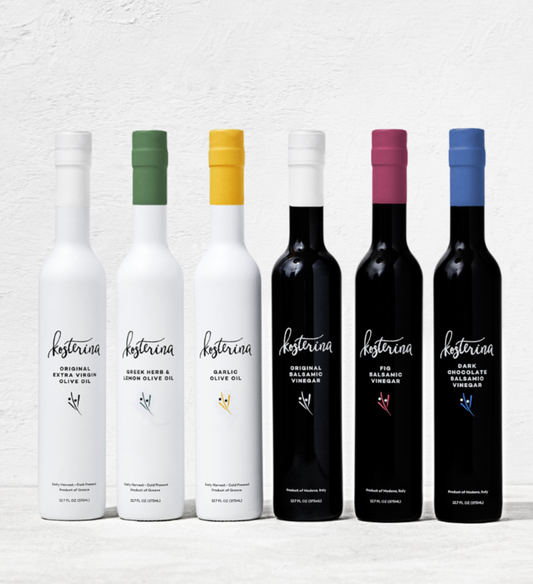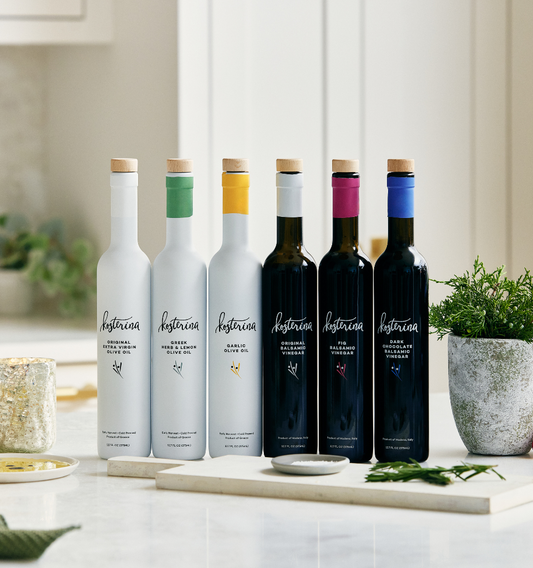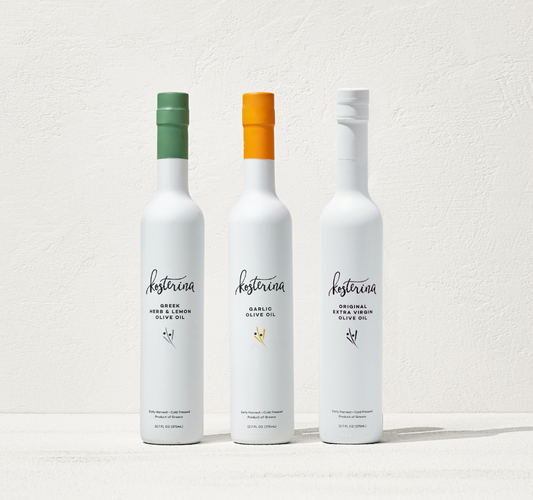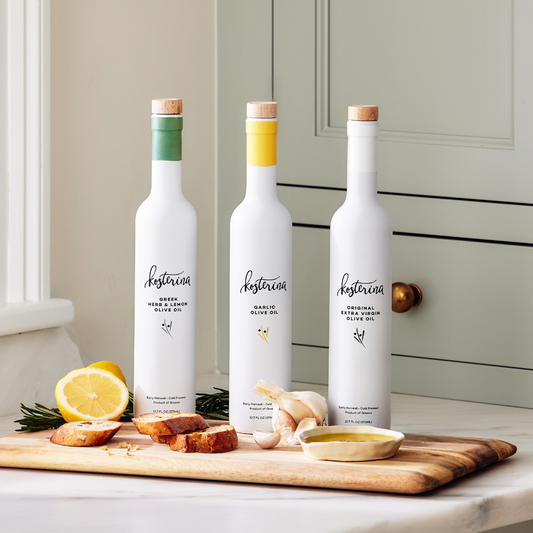At Kosterina, the olive is at the center of everything we do. As we celebrate this ancient ingredient all week long, we'll be diving into the history of olives, how EVOO is made and what makes it truly "extra virgin", and, of course, the incredible health benefits and uses for EVOO (pro tip: it's the best moisturizer).
To start the week, here are answers to some of your most frequently asked questions. Consider this your Olive Oil: 101.
What is an olive?
It's a fruit! Like cherries, peaches, and plums, olives are stone fruit. Stone fruits have a fleshy outer covering surrounds a pit or stone, which in turn encases a seed. In the case of the olive, the outer flesh contains up to 30% oil—a concentration so impressive that the English word for "oil" comes from the ancient Greek word for olive, "elaia." -
National Geographic
Where do olives come from?
Archaeological and scientific evidence indicates that the olive tree (Olea europaea) was most likely first cultivated on the border between Turkey and Syria, spreading from there throughout the Mediterranean, to Israel, Palestine, Jordan, Lebanon, Greece, Italy, France, and Spain. (It was Spanish colonists who brought it to the "New World"). People on the eastern side of the Mediterranean have been grinding olives for oil for 6,000-8,000 years. Olive oil has historically been used for cooking, cosmetics, medicine, and lamp fuel. In Ancient Greece, the original Olympic torch burned olive oil and athletes and kings were anointed with it.
What are polyphenols?
Polyphenols are naturally-derived compounds with antioxidant properties. Occurring naturally in olive oil, they are proven to help reduce the risks of cardiovascular disease, chronic disease and the inflammation in the body that causes cancer, Alzheimer’s disease, and diabetes. You can read more on our blog post
HERE.
How is olive oil made?
Be sure to check out this great explanation by
Olive Oil & Beyond for more details but here's a quick-ish summary: The best olive oils (like Kosterina ;) are made from olives that have been carefully handpicked from the tree, early in the harvest season, when the olive is green and unripe. The earlier the olive is harvested and picked, the richer the flavor and the higher the polyphenol content. Once picked, the olives are sorted and crushed (pits included) using stainless steel rollers or millstone crushers, resulting in a thick smooth paste. The olive paste is then slowly mixed to break up the oil and water emulsion, achieving the maximum oil yield. Among the few methods used for extracting the oil, the centrifuge method (known also as the Continuous System), is a more modern day process adopted by artisanal growers. The centrifuge spins the paste at a high velocity and the resulting oil is left to settle for one month in containers, producing an unfiltered extra virgin olive oil, naturally high in nutrients, full of flavor and texture.
What does EVOO stand for?
Extra Virgin Olive Oil
What makes an olive oil extra virgin?
Extra virgin olive oils are cold-pressed from the first press of the olive, use a single variety of olives and have at least 55mg/kg of polyphenols. Virgin oils, on the other hand, are from the second press of the olive and “pure” or just “olive oil” is from the third press. These olive oils are made from a blend of olives from different regions and of different varieties, and can include both cold-pressed and processed oils. This results in an olive oil that has much less flavor and fewer, if any, nutrients.
What does cold-pressed mean?
This means the oil was extracted (“pressed”) from the olives without heat or chemicals, aka "cold-pressed." Applying heat or chemicals can alter and destroy the flavors, aromas and nutritional benefits of the olive oil.
Can I use EVOO on my hands and face?
Absolutely! Dermatologists everywhere agree: EVOO does wonders for your skin. Not only is it great for hydration and glow, but it's packed with antioxidant properties like squalene that protect your skin from free radicals, environmental damage and more. Generally, it's safe to use daily - especially as protection against sun damage.
